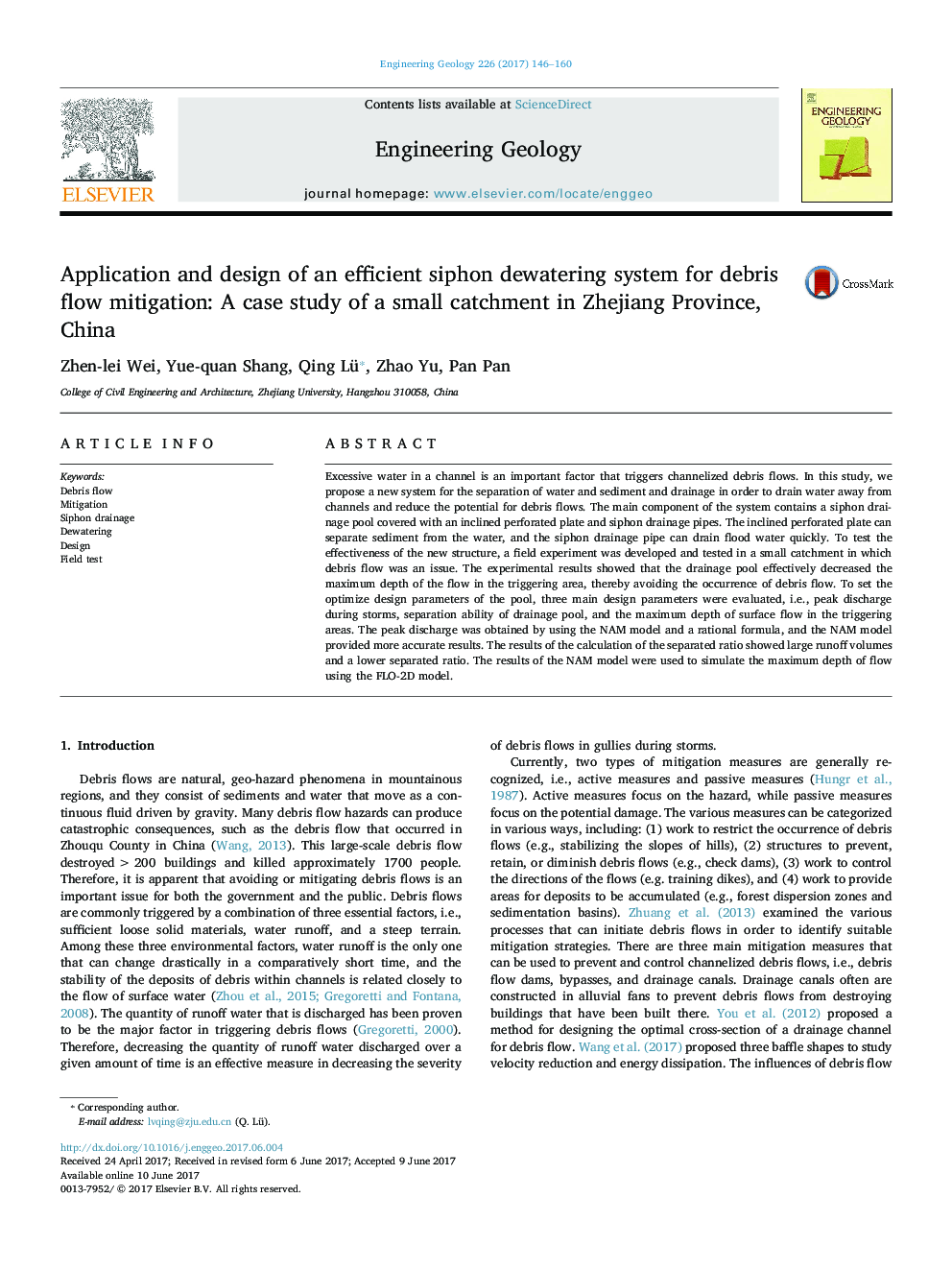| کد مقاله | کد نشریه | سال انتشار | مقاله انگلیسی | نسخه تمام متن |
|---|---|---|---|---|
| 5787479 | 1641759 | 2017 | 15 صفحه PDF | دانلود رایگان |
- A new and efficient siphon dewatering system for debris flow mitigation is proposed.
- The effectiveness of the system is illustrated via a case study in a small catchment.
- A procedure for selecting the design parameters of the system is presented.
- Influence of different return periods of storms on the design parameters is investigated.
Excessive water in a channel is an important factor that triggers channelized debris flows. In this study, we propose a new system for the separation of water and sediment and drainage in order to drain water away from channels and reduce the potential for debris flows. The main component of the system contains a siphon drainage pool covered with an inclined perforated plate and siphon drainage pipes. The inclined perforated plate can separate sediment from the water, and the siphon drainage pipe can drain flood water quickly. To test the effectiveness of the new structure, a field experiment was developed and tested in a small catchment in which debris flow was an issue. The experimental results showed that the drainage pool effectively decreased the maximum depth of the flow in the triggering area, thereby avoiding the occurrence of debris flow. To set the optimize design parameters of the pool, three main design parameters were evaluated, i.e., peak discharge during storms, separation ability of drainage pool, and the maximum depth of surface flow in the triggering areas. The peak discharge was obtained by using the NAM model and a rational formula, and the NAM model provided more accurate results. The results of the calculation of the separated ratio showed large runoff volumes and a lower separated ratio. The results of the NAM model were used to simulate the maximum depth of flow using the FLO-2D model.
Journal: Engineering Geology - Volume 226, 30 August 2017, Pages 146-160
